by Miriam Krakowski FCRH ’27
Wednesday night, October 2, 2024, according to the Gregorian calendar, marks the beginning of the Rosh Hashanah, a Jewish New Year 5785. The holiday lasts two days, this year, until Friday night, in the Diaspora. Literally translated as “head of the year,” Rosh Hashanah marks the first day of the Hebrew month Tishrei and the beginning of the Jewish calendar year, set by the lunar cycle, with the new moon marking the beginning of each new month. This is different from the Gregorian solar calendar. Because the Jewish calendar is lunar, though the holidays are fixed according to lunar months, they float in the Gregorian calendar, much like Muslim holidays, or Easter in the Christian calendar.
Adherence to the Jewish calendar is one of the most important aspects of Jewish religious practice. The marking of each month, which is tied to the appearance of the new moon, is crucial for both the major and minor holidays. Each new moon (Rosh Chodesh, the “head of the month”) is a minor holiday marking a new month. It is this system of lunar calculation that determines one of the holiest days of the year, the first day of the first month, which is Rosh Hashanah.
Rosh Hashanah begins the Jewish calendar year, but as a holiday it represents much more. In Jewish tradition, on Rosh Hashanah, God judges the world and decides what the events of the upcoming year will look like. Ten days later, on Yom Kippur, the Day of Atonement, Jews fast and atone for their sins, hoping for any evil decree to be overturned. The meaning of this period in Jewish life and thought is summed up by a line in the prayer “Unetaneh Tokef,” an iconic prayer recited both on Rosh Hashanah and Yom Kippur. בְּרֹאשׁ הַשָּׁנָה יִכָּתֵבוּן, וּבְיוֹם צוֹם כִּפּוּר יֵחָתֵמוּן: on Rosh Hashanah it is written, and on Yom Kippur it is sealed. On Rosh Hashanah, individuals are judged, and their futures are written down; on Yom Kippur, they have a chance to repent before the judgment is finally sealed.
Shown here is the prayer of “Unetaneh Tokef,” printed in an Italian mahzor (prayerbook for the High Holidays). The prayer of “Untaneh Tokef” first began to appear in the 11th century, and its origins are unknown, though a popular legend attributes it to an eleventh-century figure, Rabbi Amnon of Mainz. The prayer is a central part of the High Holiday prayers. This mahzor was printed in Bologna in 1540 and contains prayers according to the traditions of the Jewish community of Rome.
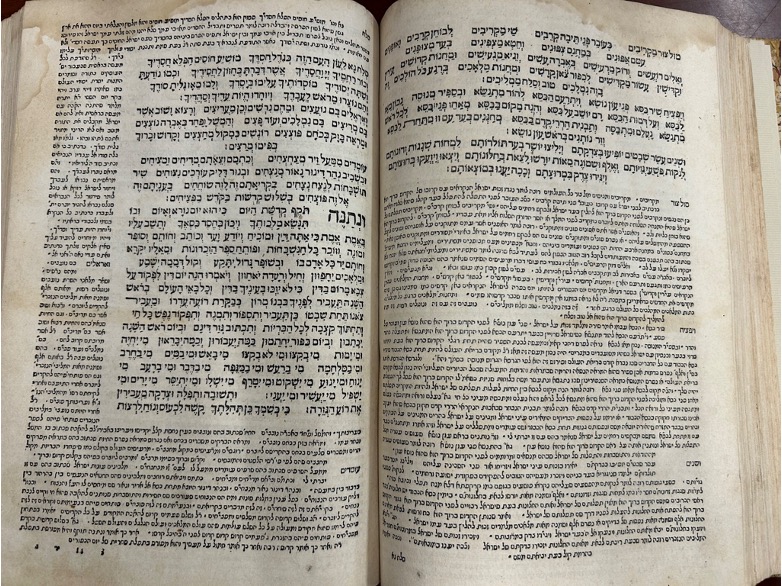
It was published before the censorship of Jewish books was established and it bears many expurgations by later Christian censors, though not on this page.
Rosh Hashanah is a solemn holiday, but in the Jewish tradition, it is joyous as well. On Rosh Hashanah, the creation of the world and God’s role in it are celebrated. Given that this day will set the tone for the year to come, it is important to make it into a joyous day, to lead into a hopefully joyous year. To this end, many symbolic things are done to represent the good things that we would like for the coming year. We eat sweet food (such as apples dipped in honey), so that the year ahead will be a sweet one. It is traditional to consume the head of a fish, representative of a year in which we hope we will be “the head and not the tail”. We consume the seeds of a pomegranate, in the hopes that our good deeds will mirror the abundance of the seeds of a pomegranate. In essence, we hope that we will be judged for the good and we act accordingly, making the day into a joyous holiday. It is a time of reflection over the year that was, but also of hope for the year to come. In essence, Rosh Hashanah celebrates the beginning of a new year of creation – this year will mark the start of the Jewish year 5785.

Since the calculation of the calendar is so important to the holiday and to all of Jewish practice, we are showcasing here some historical pamphlets from Fordham’s collection containing calendars marked with holidays and dates as they correspond both to Jewish and to the Gregorian calendars for the use by Jews in a given year. These calendars, calculated in advance based on the lunar cycle and other factors (such as the addition of a month in a Jewish leap year), each begin by marking the holiday of Rosh Hashanah.
The calendars were produced by Il Vessillo Israelitico, one of the earliest Jewish newspapers in Italy. Operating out of Casale, the paper was published from 1853 to 1921.
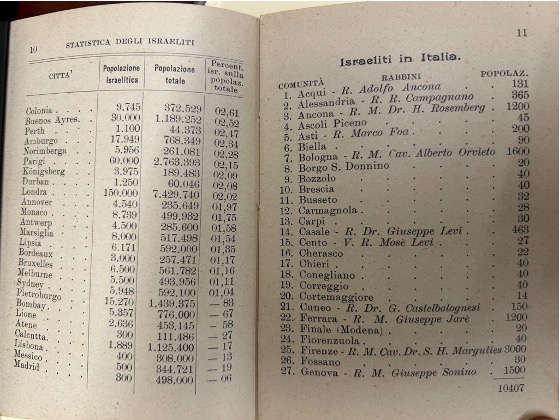
Fordham possesses two calendars, printed in 1891 and 1912 respectively that line up Jewish dates and holidays with the Gregorian calendar. The open pages mark the New Year season in conjunction with the secular dates as they fell out in the years in which they were produced.

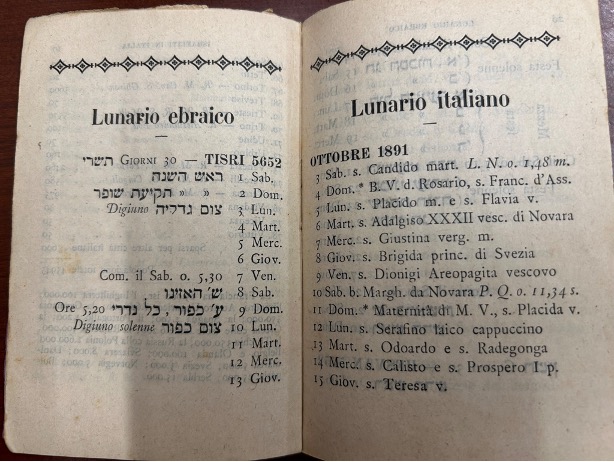
The calendars below were produced in the USSR in the 1960s, at a time when Jewish practice was suppressed. Due to a ban on Hebrew printing, these calendars were handwritten and then photographed for distribution, allowing religious Jews to be aware of and to observe the holidays, despite government discouragement. The open pages show the tables concerning the High Holidays (Rosh Hashanah and Yom Kippur).
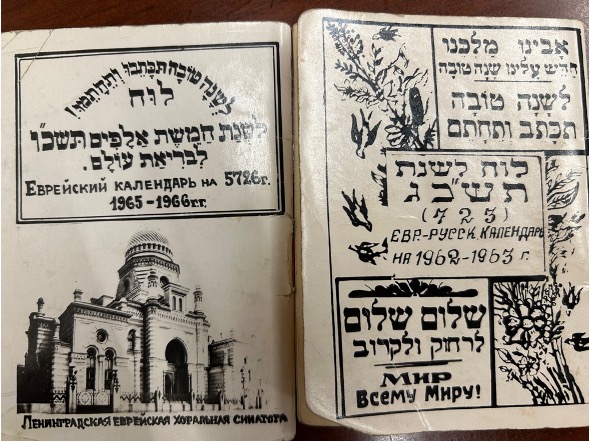
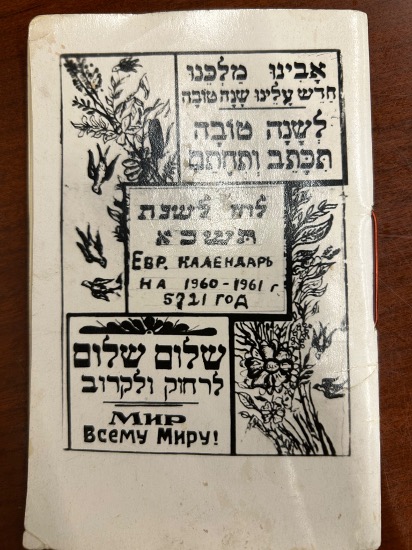
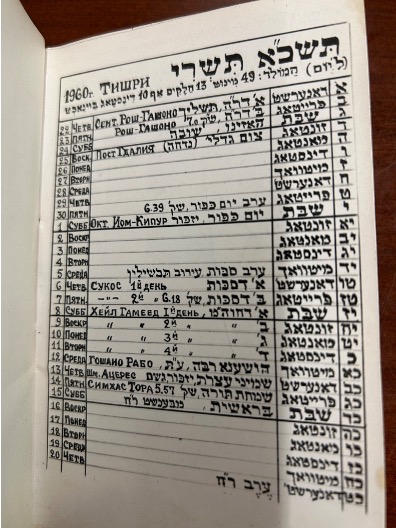

The final calendar shown here was printed at the end of a World War II. It is a prayerbook for Jews in British armed forces. The book was printed by the Senior Jewish Chaplain of the HM Armed Forces, and contains prayers for going into battle and for all major holidays. The end contains a table for soldiers to keep track of holidays.
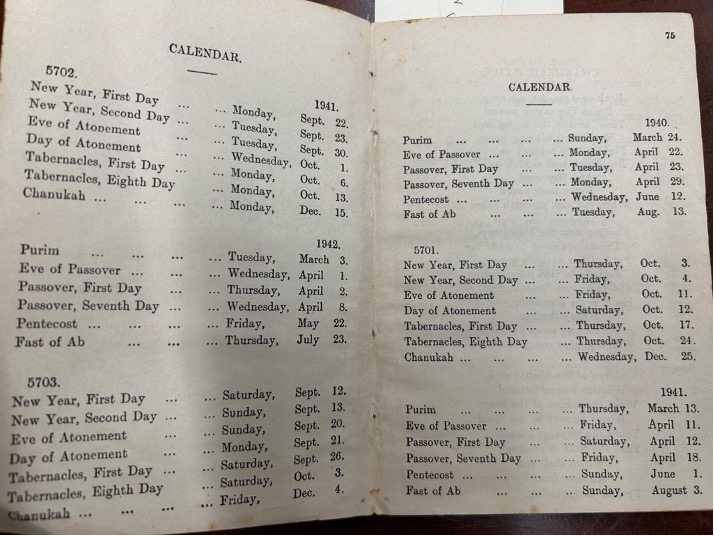
Shanah Tovah!

